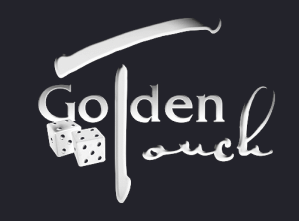
Golden Touch Craps
Playing a "Hopping 7s" Progression with a controlled shooter
A while back I wrote about playing a "Hopping 7s" progression. That article can be found here: http://stickman.casinocitytimes.com/articles/42967.html
The conclusion of that article was to avoid using the progression because the house edge of 11.11 percent will ultimately prevail. The savvy craps player will instead wager on the lowest house edge bets in an effort to minimize losses and possibly win more often. What if the shooter can control the dice? A dice controller can actually set and throw the dice in a way that increases (or decreases) the appearance of the 7. Can a dice controller overcome the house edge? Can he make it preferable to bet the hopping 7s progression rather than lower house edge bets such as placing the 6 or 8? Lets find out.
The math of the hop bet says that in a random game a player will lose 11.11 percent of all money wagered. The math also says that in a random game a player placing the 6 (or 8) will lose 1.52 percent of all money wagered. That is what the math says. Lets see what some simulations say. I ran several simulations specifying a random shooter and various levels of dice control through an excellent software program called Smart Craps from DeepNet Technologies. Each simulation was for 10 million rounds. Also for each simulation showing axis control (keeping the dice on axis more than random), the Smart Craps recommended set was used (yes, Smart Craps actually tells you the best set to use for various bets based on your specific results). This set was always an all 7s set for the hopping 7s progression and the 3-V set for placing the six.
All 7s Set: This set places the 6 face on both dice to the left, the top faces have 3 and 4, and the faces toward the shooter have 5 and 2.
3-V Set: This set places the 6 and 5 to the left with 3s on top and 5 and 1 facing the shooter.
Several types of dice control were simulated random, SRR, and axis control.
- Random simulates the typical random shooter with no dice control.
- SRR stands for Sevens-to-Rolls-Ratio. A random shooter will have one 7 in every six rolls in the long run which is 1 in 6.0 or represented as simply and SRR of 6.0. As the number of 7s decrease the SRR increases. One 7 in every 6.5 rolls is represented as an SRR of 6.5.
- Smart Craps measures on-axis control. All throws entered into Smart Craps for analysis use the "Hardway Set." The four sides of the hardway set show 2-2, 3-3, 4-4, and 5-5 which are the hardway numbers.
Axis Control is measured by three factors: 1) number of times the dice are on axis per 1,000 rolls, 2) number of times dice end up as a hardway when they are on-axis, and 3) number of times the dice "double-pitch" to make a 7 when they are on axis. A pitch is the movement on-axis so a double pitch would end up with a 2-5, 3-4, 4-3, or 5-2 showing. The numbers in the table below show these three results for several degrees of control. For each level of axis control (482, 500, and 600) the first line of the two shows a random number of hardways and double pitches. The second line of the two shows marginally passing numbers for that control factor. For example, the line 482-121-121 shows 482 on-axis throws out of 1,000, 121 hardways (25 percent of 482), and 121 double pitch 7s (25 percent 0f 482).
|
Results from Smart Craps Simulations |
||
|
Hopping 7s |
Placing the 6 |
|
|
Type of Control |
Edge |
Edge |
|
Random |
11.10% |
-1.53% |
|
SRR 6.5 |
-17.62% |
3.57% |
|
SRR 5.5 |
-3.16% |
-7.28% |
|
482-121-121 |
-8.66% |
0.60% |
|
482-144-98 |
4.74% |
8.75% |
|
500-125-125 |
-5.89% |
1.67% |
|
500-150-100 |
6.39% |
10.51% |
|
600-150-150 |
2.03% |
7.26% |
|
600-176-125 |
15.51% |
16.27% |
The random results were very close to the mathematical calculations of -11.11 percent (-11.10) for hopping 7s and -1.52 percent (-1.53) for placing the 6. When the SRR increases to 6.5 hopping 7s is worse (-17.62 percent) than random and placing the 6 is better (3.57 percent) than random due to fewer 7s showing. When the SRR decreases to 5.5 hopping 7s is better (-3.16) than random and placing the 6 is worse (-7.28) than random due to more 7s showing.
Axis-control has some interesting results. As the level of on-axis control increases, the results become better for the player. The results are dramatically improved when all three on-axis control factors are at a passing level. But even with an exceptional level of on-axis control (600-176-125), more money is made placing the 6 than playing the hopping 7s progression.
It is clear from these numbers that playing the best bets (that is, the lowest house edge bets) makes sense even for exceptional dice controllers. The high house edge on the crazy crapper bets is nearly impossible to overcome. Accept the fact and bet the low house edge bets even as a dice controller. Your bankroll will thank you.
May all your wins be swift and large and all your losses slow and tiny.
Jerry "Stickman" is an expert in craps, blackjack, video poker and advantage slot machine play. He is a regular contributor to top gaming magazines. The "Stickman" is also a certified instructor for Golden Touch Craps and Golden Touch Blackjack. For more information visit www.goldentouchcraps.com or www.goldentouchblackjack.com or call 1-886-738-3423. You can contact Jerry "Stickman" at stickman@goldentouchcraps.com


